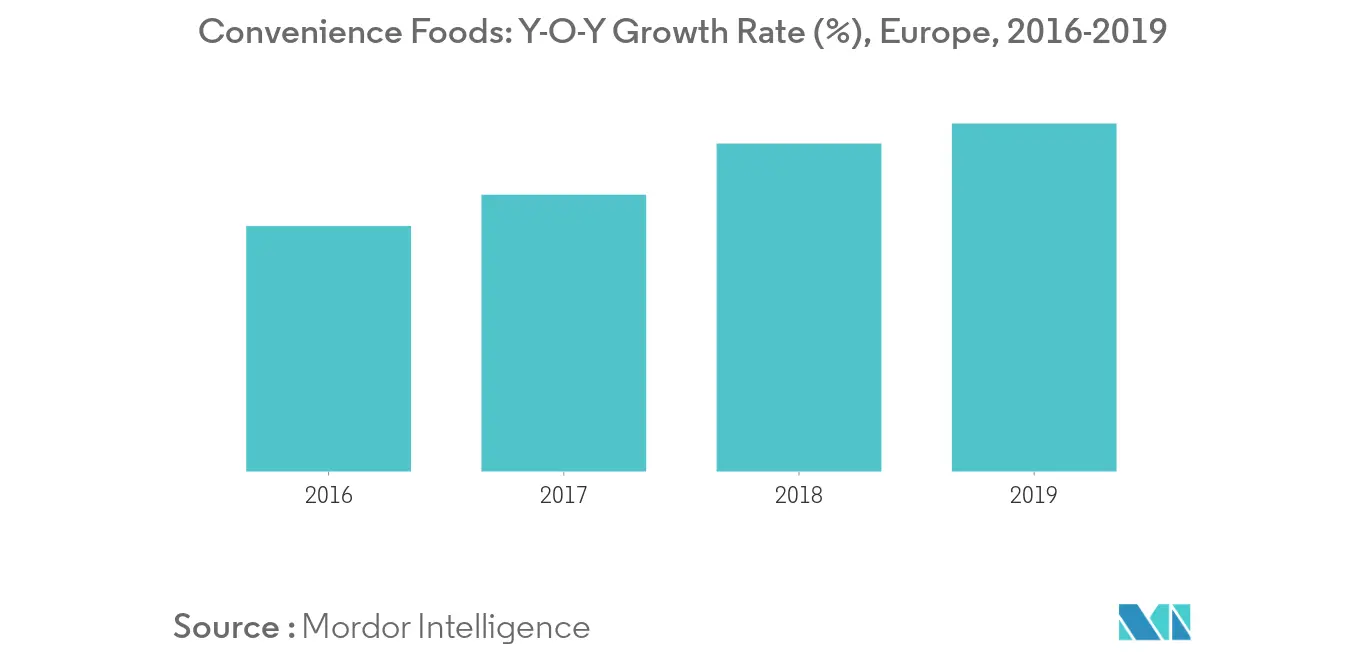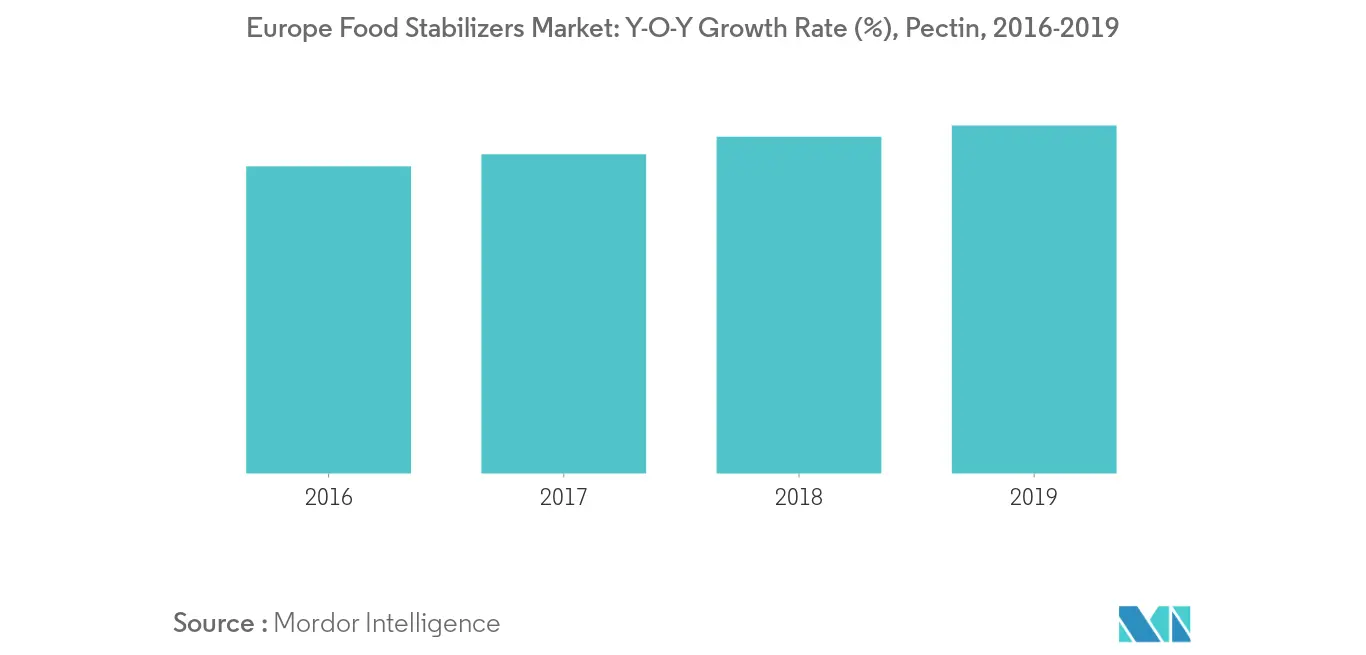Market Trends of Europe Food Stabilizers Industry
This section covers the major market trends shaping the Europe Food Stabilizers Market according to our research experts:
Increasing Demand for Convenience Foods
The rising economy of the region has led to a hectic lifestyle of the European population. The consumers in the region are more inclined toward convenience food products, including instant soups, sauces, noodles, baked goods, and other ready meals, owing to their instant nature, i.e., lesser preparation time and easy handling. Food stabilizers make up a very small part of the final product, but they have a significant impact on the final packaged product. Products, ranging from fat-free dressing, low-fat mayonnaise, sauces, processed meat products, etc., require a broad variety of functional ingredients to provide optimization in terms of stability, creaminess, shelf-life, viscosity, and water absorption, among others. Thus, food sectors such as bakery, confectionery, and prepared food are likely to procure more food stabilizers, thus driving the market growth.

Pectin Holds Significant Share of the Market
Pectin can be used as a thickener, stabilizer, and emulsifier. It is a reversible colloid. The use and composition of pectin are regulated under food additive law in various countries. In the European Union, pectin is approved for use in accordance with Regulation (EC) 1333/2008 on food additives which leads to gaining consumer trust in the final products, especially it is used in the production of jams, as a stabilizing agent. European consumers are more inclined towards natural ingredients in their food products. Moreover, commercially pectin is prepared from citrus fruit pulp or from papaya, guava, and other fruits and it is an extracted and polished peel of grapefruit, lemons, oranges, apples, and other fruits, which makes it a natural source of food stabilizers. Thus, driving the demand in the region.


